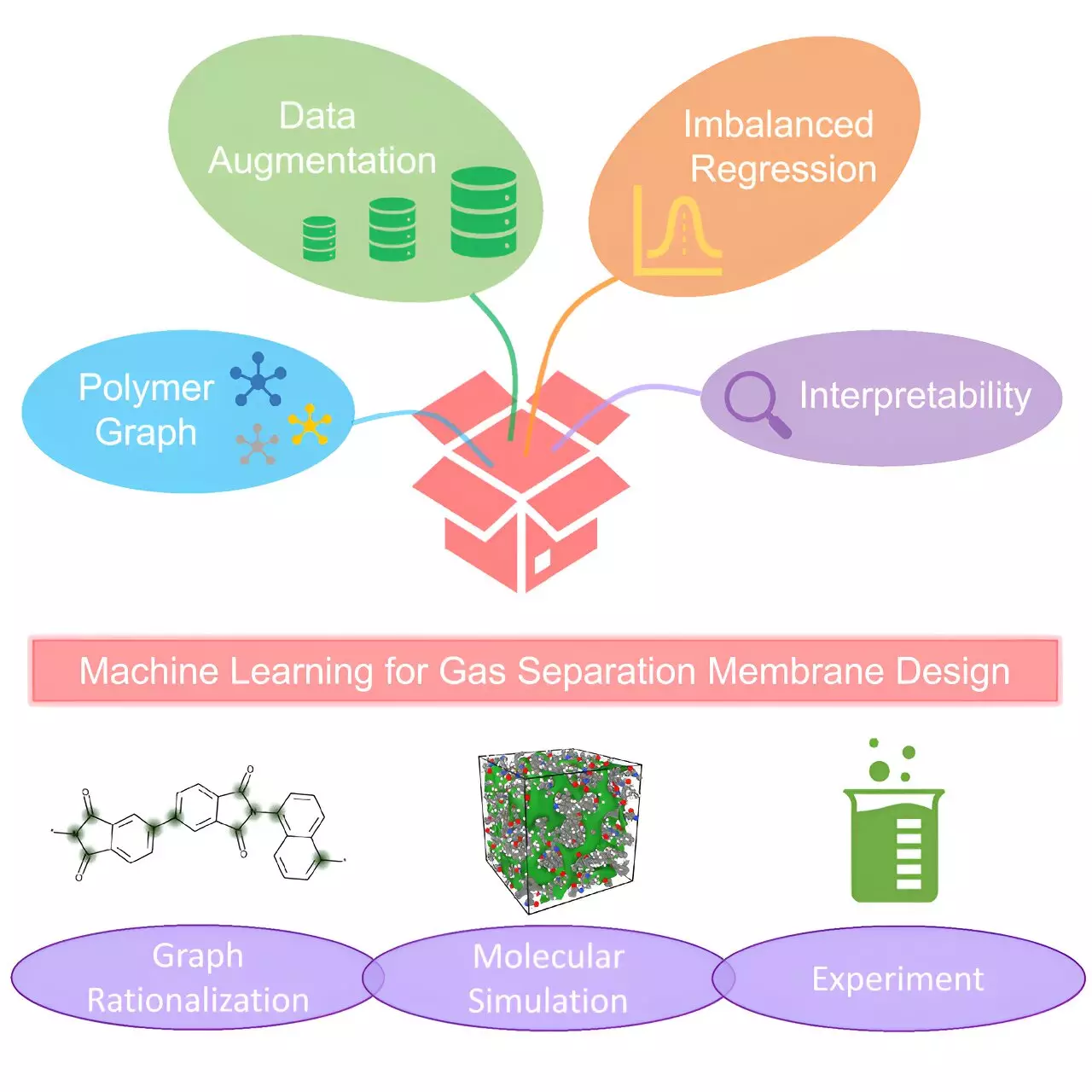Gas separation, a crucial process for both manufacturing and research purposes, is responsible for a significant portion of the United States’ energy consumption and carbon emissions. However, a groundbreaking study conducted by a team of researchers at the University of Notre Dame has uncovered a new approach to gas separation using polymer membranes. By leveraging graph-based machine learning techniques, these scientists have identified, synthesized, and tested membranes that can separate gases up to 6.7 times more effectively than previous iterations.
According to Agboola Suleiman, a doctoral student involved in the research, the key to a membrane’s performance lies in its microscopic porosity. The ideal membrane material must strike a delicate balance between permeability and selectivity, allowing gases to pass through while blocking others. By utilizing graph neural networks (GNN), the research team was able to identify two polymers with the necessary properties to outperform existing membranes. This innovative approach led them to materials that had previously been overlooked for gas separation applications.
One of the main challenges in developing new membrane materials is the cost and time associated with synthesizing polymers. Additionally, the lack of comprehensive data on these materials poses a significant obstacle for researchers. However, through algorithmic advancements pioneered by computer scientists Meng Jiang and Gang Liu, the team was able to augment and enhance their data. By utilizing machine learning techniques, they were not only able to predict the best membrane materials but also to explain why these materials were superior.
The top-performing polymers identified by the research team have the potential to revolutionize gas separation processes in industrial applications. These membranes have demonstrated exceptional performance in separating various gas pairs, making them invaluable for a wide range of industries. By leveraging the power of machine learning and innovative synthesis techniques, the researchers have unlocked a new era in gas separation technology.
The development of highly efficient polymer membranes for gas separation represents a significant breakthrough in the field of chemical engineering. By combining the principles of material science, machine learning, and innovative synthesis methods, researchers have been able to identify materials that outperform traditional membranes by a wide margin. This discovery paves the way for more sustainable and environmentally friendly gas separation processes, offering new opportunities for energy efficiency and carbon reduction in the future.


Leave a Reply